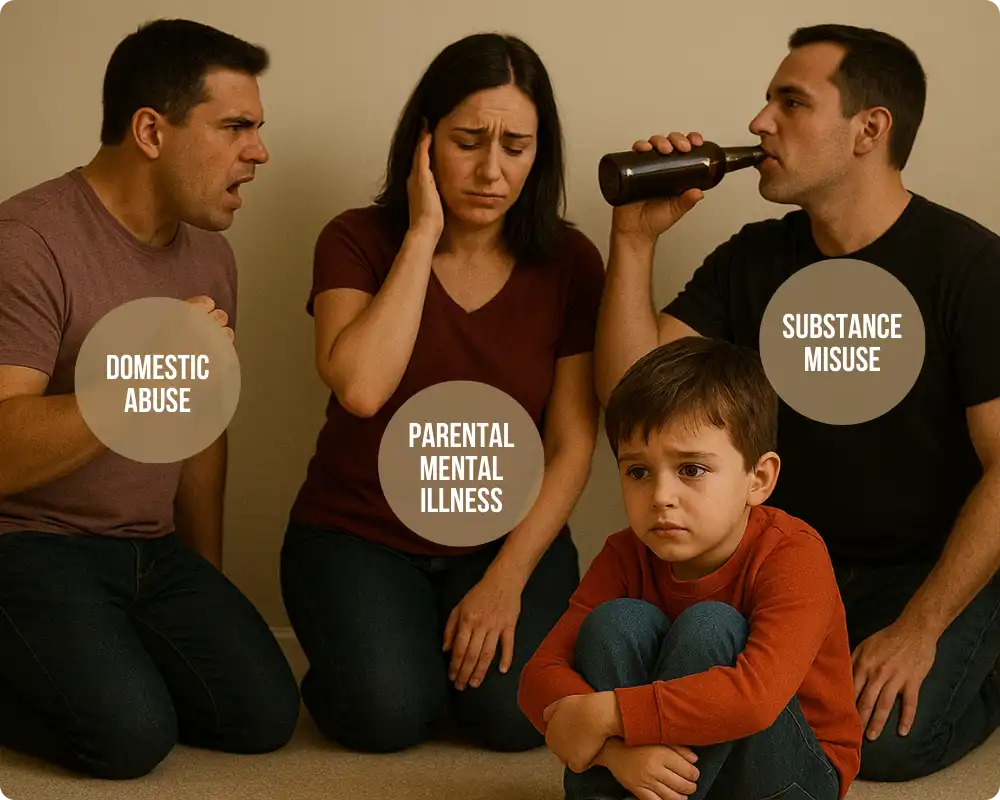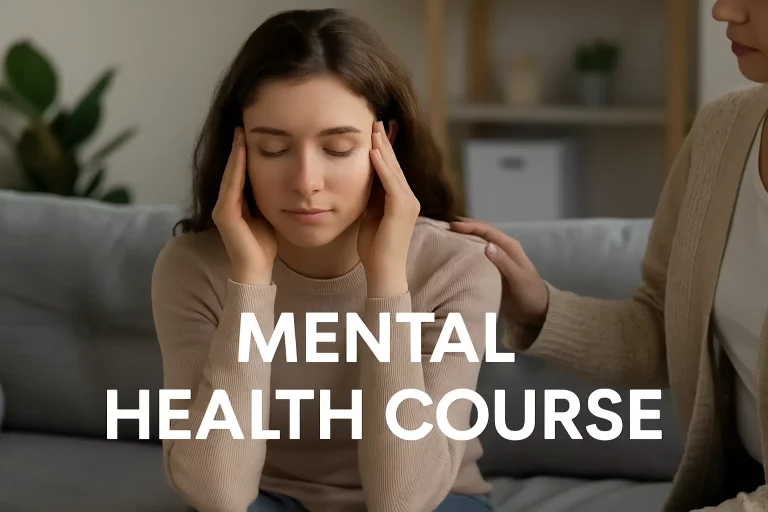In safeguarding, the term Toxic Trio refers to the co-occurrence of domestic abuse, parental mental ill-health, and substance misuse. These three issues often overlap and significantly increase the risk of harm to children. Recognising and addressing the Toxic Trio is essential in preventing neglect and abuse, and ensuring early support for vulnerable families.

What is the toxic trio?
The Toxic Trio is a term used in safeguarding to describe the combination of three key risk factors that commonly co-occur in families where children are at risk of harm. These factors are:
- Domestic abuse: violence or coercive control between adults in the home
- Parental mental ill-health: including depression, anxiety, or more severe conditions
- Substance misuse: the harmful or dependent use of alcohol or drugs
When present together, these issues can significantly increase the likelihood of child neglect, abuse, and long-term emotional damage.
How the Toxic Trio Affects Children
Research shows that children exposed to the Toxic Trio are at a higher risk of abuse, neglect, and poor life outcomes. The cumulative effect of these three parental risk factors is often highlighted in serious case reviews and child protection inquiries. Exposure to such environments can lead to disrupted attachment, behavioural difficulties, reduced educational attainment, and increased vulnerability to mental health issues. The Toxic Trio also correlates with future involvement in the criminal justice or care systems if not addressed early.
The Link Between the Toxic Trio and Abuse
Understanding how the Toxic Trio, domestic abuse, parental mental illness, and substance misuse, contributes to child abuse and neglect is vital in safeguarding work. These risk factors often overlap, creating complex home environments where children’s needs are overlooked or unmet. The table below outlines how each element affects children and highlights the challenges professionals face in identifying and addressing these risks.
This table shows how the Toxic Trio affects children and explains why a full-picture approach is key to effective safeguarding:
| Toxic Trio Factors | How They Contribute to Abuse/Neglect | Impact on Children | Safeguarding Challenge |
| Domestic Abuse | Creates fear, instability, and violence in the home | Emotional trauma, anxiety, fear, and possible physical harm | Often normalised or hidden within family dynamics |
| Parental Mental Illness | Reduces emotional availability and decision-making ability | Neglect of emotional needs, confusion, poor attachment | May be misinterpreted as temporary stress |
| Substance Misuse | Impairs judgement, increases aggression, or emotional withdrawal | Inconsistent care, exposure to dangerous situations | Can mask or overlap with other risks |
| Combined Impact | Increases overall unpredictability and household chaos | Heightened risk of abuse, neglect, and long-term trauma | Risks often mask each other, making detection harder |
| Safeguarding Need | Holistic assessment across all risk areas | Early intervention, multi-agency response essential | Professionals must consider the full context, not isolated factors |
Toxic Trio in Child Protection Cases
Identifying the Toxic Trio is a crucial part of effective child protection. When domestic abuse, parental mental illness, and substance misuse occur together, they create a high-risk environment that often triggers statutory safeguarding action. This section examines how the Toxic Trio manifests in child protection cases and why early, coordinated responses are crucial to prevent long-term harm.
These three risk factors are frequently identified in:
- Serious Case Reviews (SCRs)
- Child Protection Conferences
- Statutory assessments and referrals
When all three are present, children are:
- At significantly higher risk of neglect, emotional trauma, and abuse
- More likely to require a child protection plan
- Often in need of urgent multi-agency intervention
Early recognition of the Toxic Trio enables:
- Faster access to support for families
- Improved protection for vulnerable children
- A reduction in the risk of long-term harm
Conclusion
Behind every case where the Toxic Trio is present is a child who may be scared, unheard, or struggling alone. Recognising the signs and acting early can change the trajectory of a child’s life. Safeguarding isn’t just about policies; it’s about providing children with a safe and nurturing environment in which to grow. Awareness of the Toxic Trio helps ensure that no child is left to suffer in silence.
FAQs
What is the Toxic Trio in safeguarding?
The Toxic Trio refers to the co-occurrence of domestic abuse, parental mental illness, and substance misuse in a family setting, which increases the risk of harm to children.
How does the Toxic Trio affect children?
Children may suffer from emotional trauma, neglect, anxiety, attachment issues, and poor educational outcomes when exposed to the Toxic Trio.
What are the signs of the Toxic Trio in a household?
Warning signs may include frequent school absences, emotional withdrawal, signs of physical harm, inconsistent parenting, and chaotic home environments.
What should I do if I suspect a child is affected by the Toxic Trio?
Report your concerns to your local safeguarding team, children’s services, or the NSPCC. If you believe a child is at immediate risk, call emergency services.
Why is the Toxic Trio important in child protection?
These three risk factors are commonly identified in serious case reviews and are strongly linked to child abuse, neglect, and long-term developmental harm.
Explore Our First Aid Courses:
Emergency First Aid at Work: A practical one-day course tailored for low-risk workplaces. This hands-on training equips participants with the essential skills and confidence to respond promptly and effectively to medical emergencies.
First Aid at Work (Level 3): A comprehensive three-day course, Ofqual-regulated and ideal for high-risk environments such as construction sites, warehouses, and factories. Perfect for appointed workplace first aiders who need in-depth, regulated training.
Paediatric First Aid: This two-day, Ofqual-recognised course focuses on emergency care for infants and children up to the age of puberty. Ideal for early years practitioners, school staff, childminders, and parents.
Basic First Aid Course: A flexible, self-paced introduction to first aid. Suitable for anyone wanting to learn basic life-saving skills or refresh their existing knowledge with up-to-date guidance.
Advanced First Aid Course (Level 3): A detailed online course for individuals looking to go beyond the basics. Learn to manage more complex first aid situations and take on greater responsibility during emergencies.///





